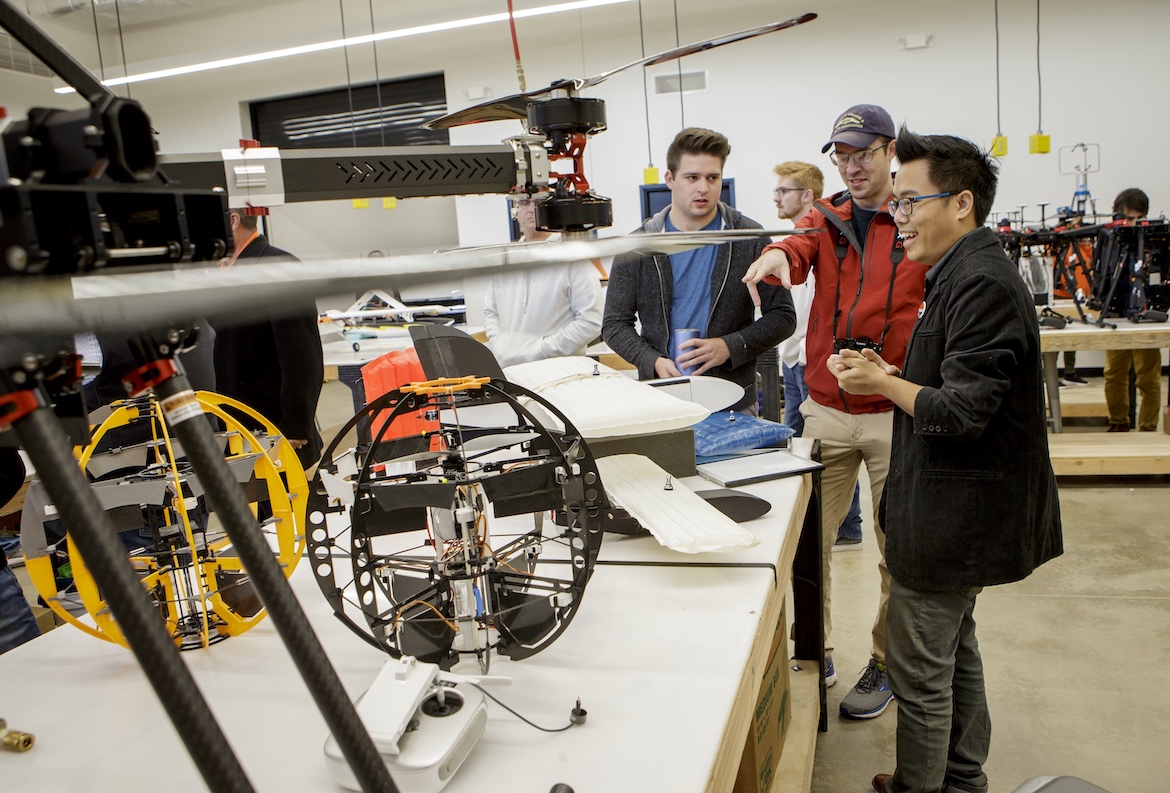
OSU developing drone to help in disasters
Friday, April 17, 2020
Idea inspired by search efforts after OKC bombing
The horrific aftermath of the Oklahoma City bombing in 1995 was the catalyst for OSU’s Unmanned Systems Research Institute’s work to help first responders today.
At that time, no technology could help rescuers locate victims without risking their own lives to climb throughout what was left of the Murrah Building.
The late Jon Hansen, of the Oklahoma City Fire Department, was the face of the recovery effort for the people of Oklahoma. He said first responders needed a better way to search room to room and communicate with the injured without having rescuers climbing through an unstable structure.
In response to Hansen’s observation, Dr. Ben Loh, USRI graduate and research engineer, created OSU’s All Terrain Land and Air Sphere (ATLAS), a drone that is encased in a protective cage. Typical drones have exposed propellers and require a coordinated landing. If one turns over, it can’t right itself.
“With something like the Murrah bombing scene, most exposed propeller platforms like a quadcopter can easily get caught by the debris or dangling wires in the building,” Loh said. “A quadcopter without a prop guard could accidentally hit an obstacle and flip over. This could mean the end of the mission since it cannot recover to flight.”
Loh’s ATLAS design has a spherical cage, protecting the propellers from debris and people from the propellers.
“The spherical frame can endure an uncoordinated landing,” Loh said. “The cage allows … ATLAS to roll away from obstacles and recover to flight.”
The ability to land ATLAS in uneven terrain is essential. Stopping the propellers gives rescuers a greater chance of communicating with victims.
“Noise from the propellers is always an issue if using a microphone to pick up the victim's voice at a disaster area,” Loh said. “One way to overcome that is to land the vehicle to stop the propeller.”
ATLAS’s design is also scalable. Loh has been working on reducing the weight and size from 17 inches to 13 inches to improve its battery life. Although optimized for indoor flight, ATLAS can be used on outdoor missions.
“The research is ongoing to make ATLAS more efficient as battery (power) remains the limitation for most drones today,” Loh said.
ATLAS is designed to carry a payload specific to the mission, from cameras and CO2 sensors to LiDAR, an instrument that uses pulses of laser light to build a complex three-dimensional terrain map.
Loh also created a version with a foam-board cage that is an affordable option for STEM teachers in elementary and secondary education.
Loh has met with fire departments, emergency managers and other potential customers to get feedback on the project. The design is ready for testing at the next natural or man-made disaster.
Dr. Jamey Jacob, director of the Unmanned Systems Research Institute, said using drones in first responses brings together two of OSU’s greatest areas of expertise: autonomous systems and firefighter training.
“The ability to design and develop these systems to not only assist first responders, but potentially save lives, really targets OSU’s mission as a land-grant university,” he said. “What serves the public good more than helping those who help others?”
Hansen told Jacob in 2012 that sending crews into the Murrah building was risky due to structural damage, but they could have saved more lives with a way to assess the situation and search rooms remotely.
“When we were first approached about the need for a system like this to be used in disaster scenarios such as the Murrah building bombing, as a native Oklahoman, it hit very close to home for me,” Jacob said. “We took it up as a labor of love to work on a platform that could solve the problems first responders encountered.”
MEDIA CONTACT: Shannon G. Rigsby | Public Information Officer | 405-744-9081 | shannon.rigsby@okstate.edu

